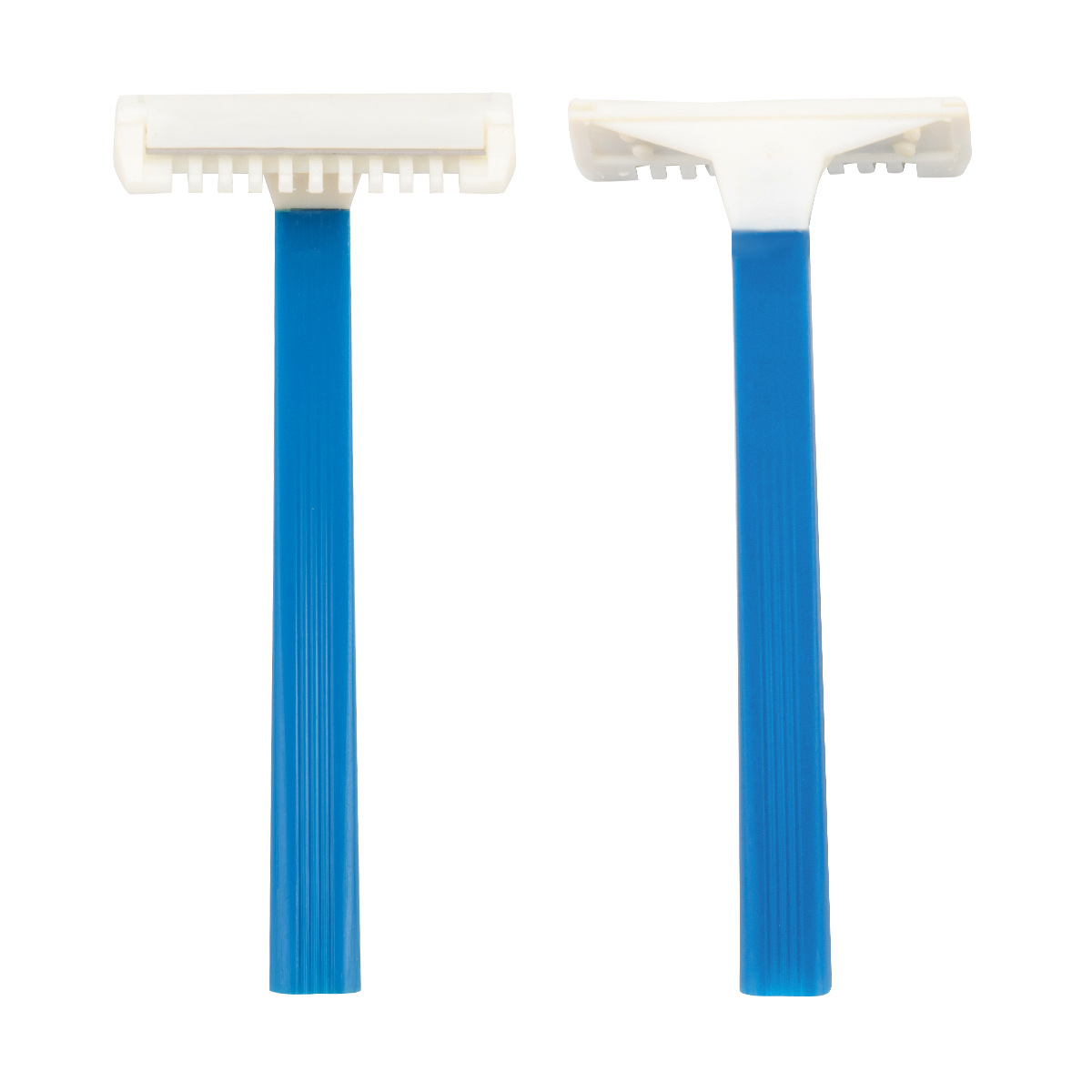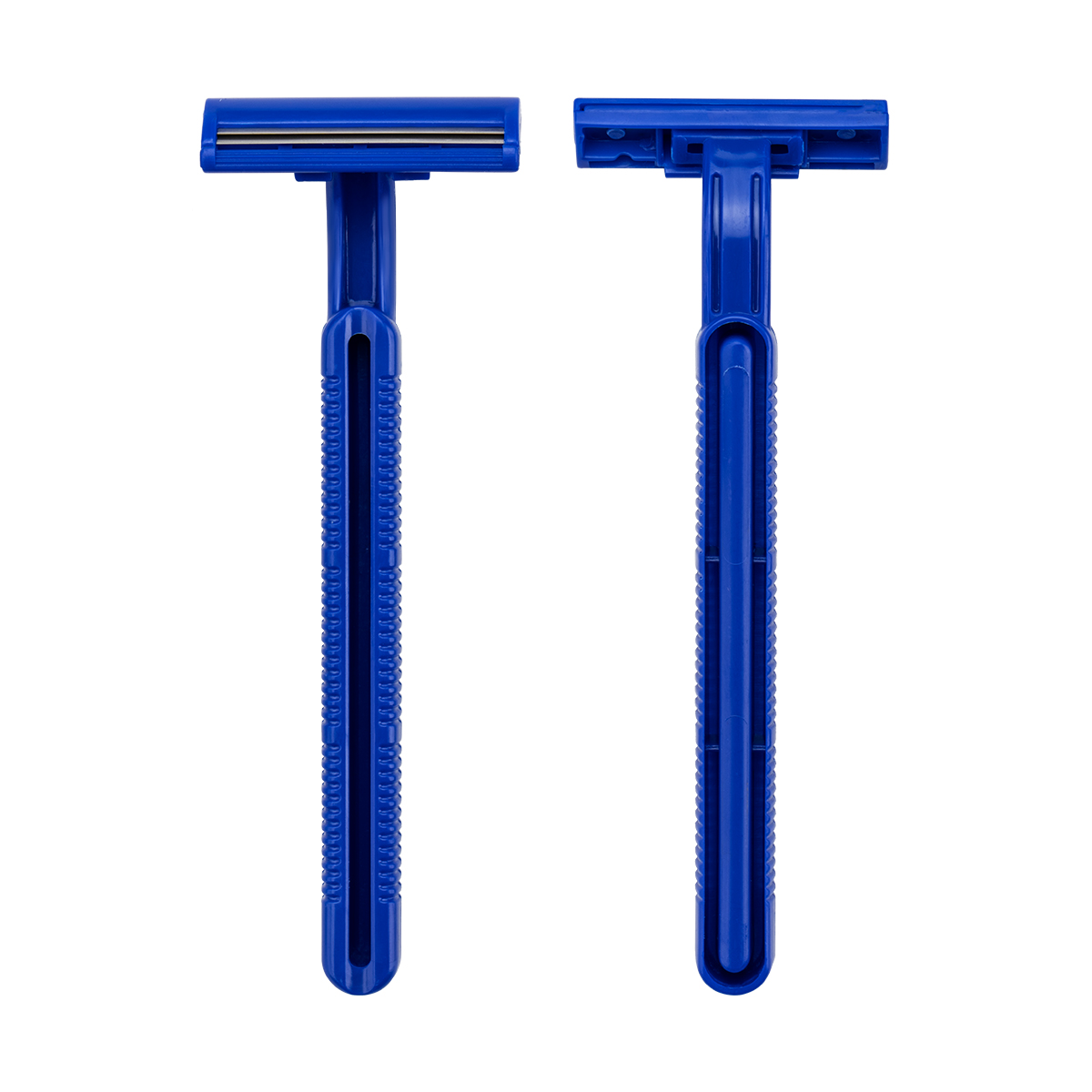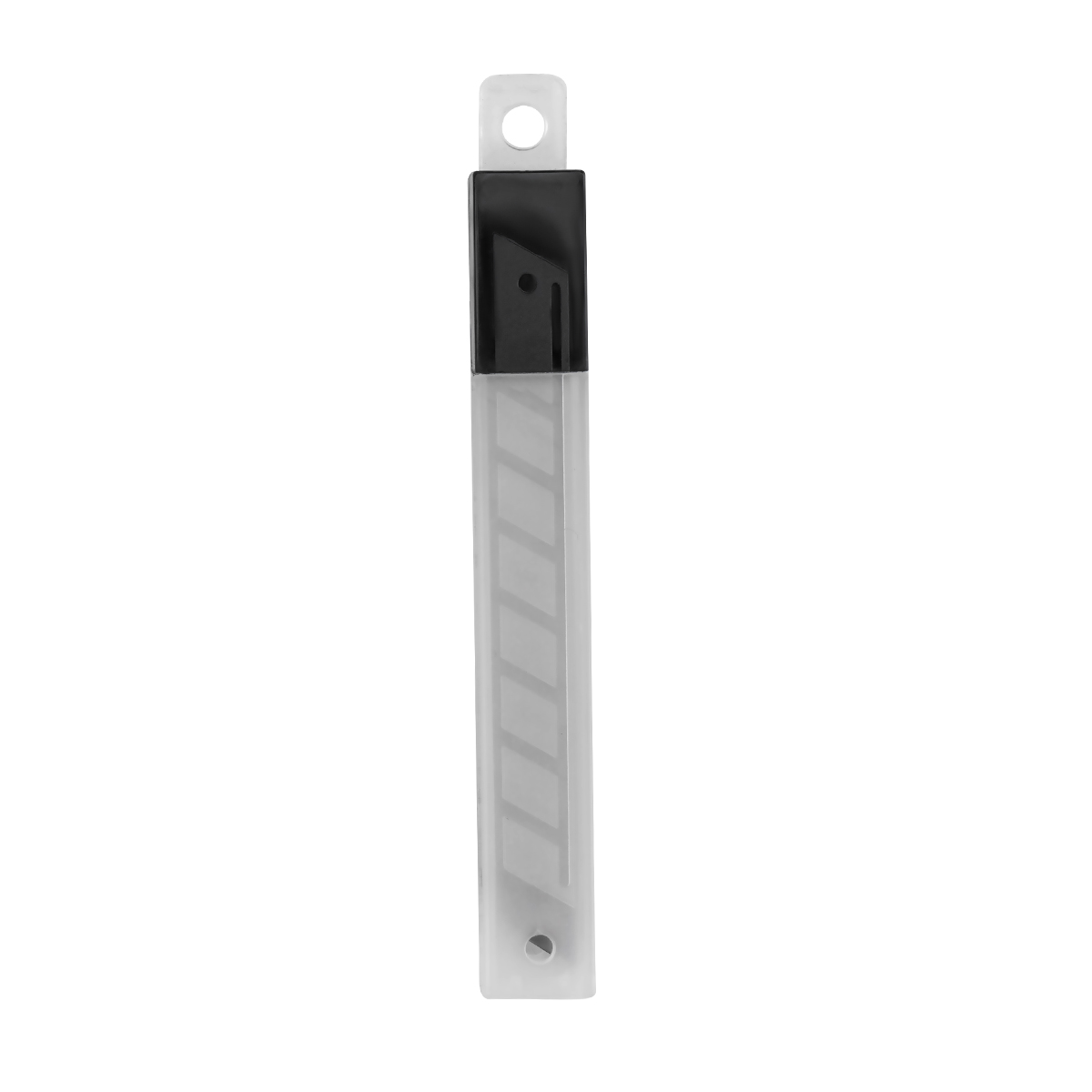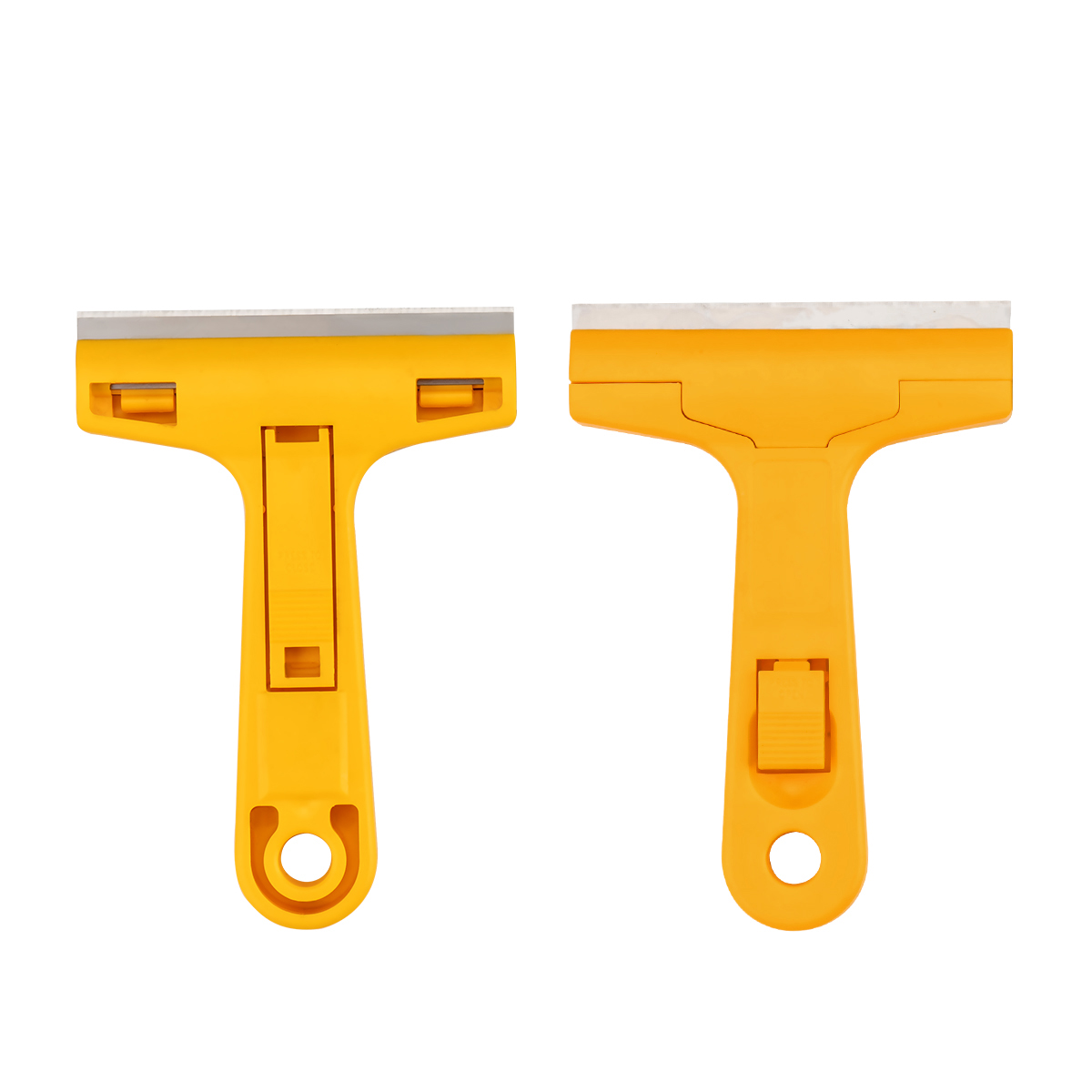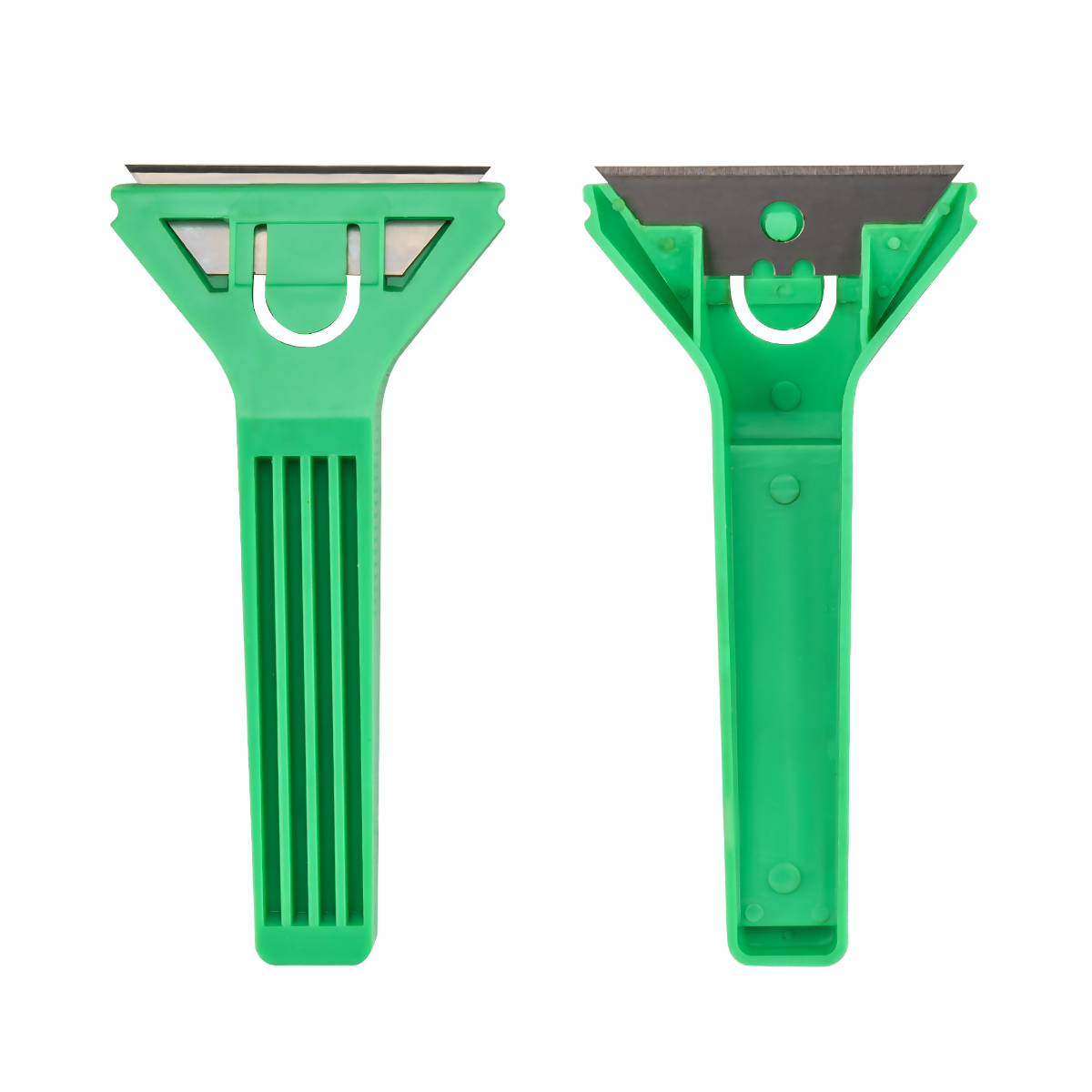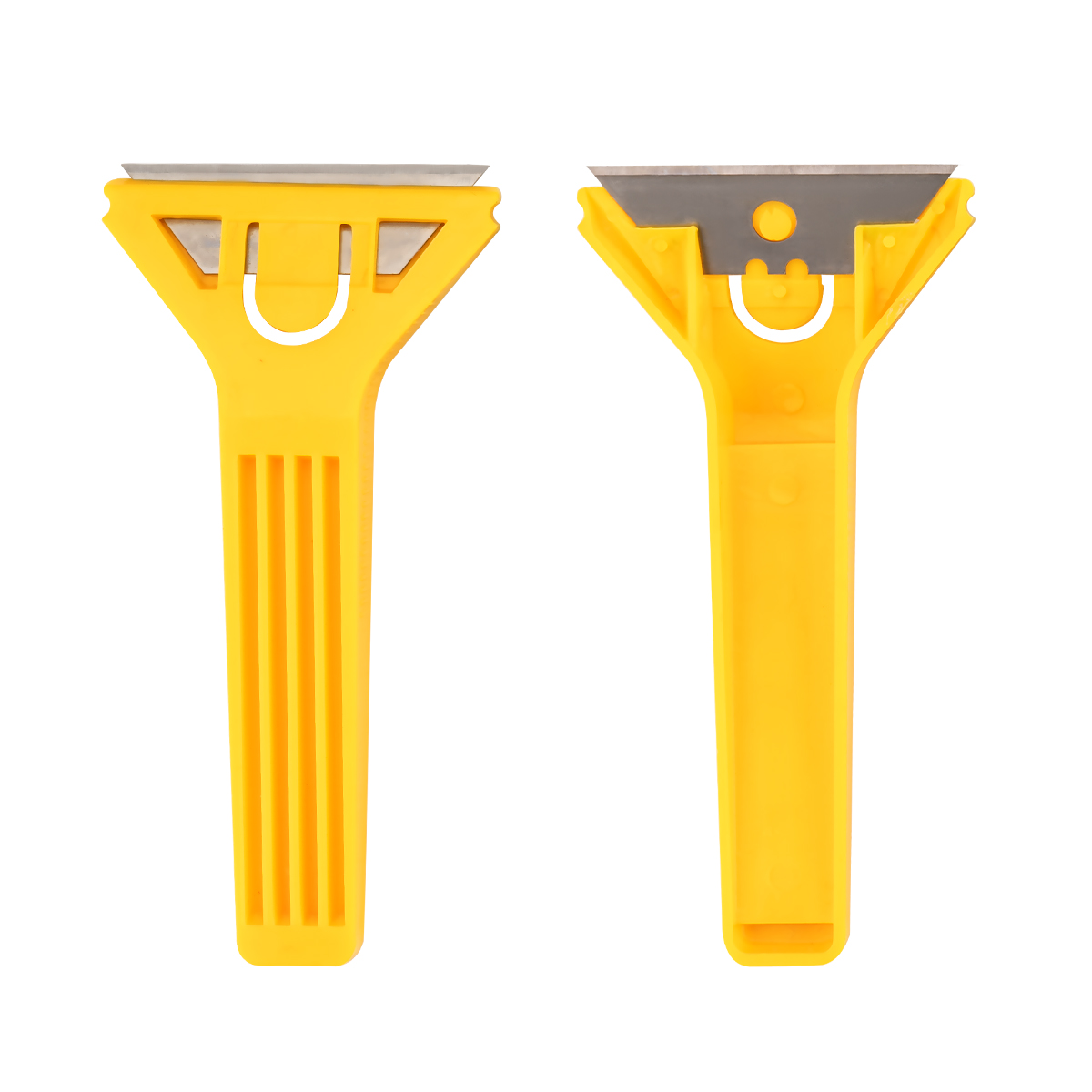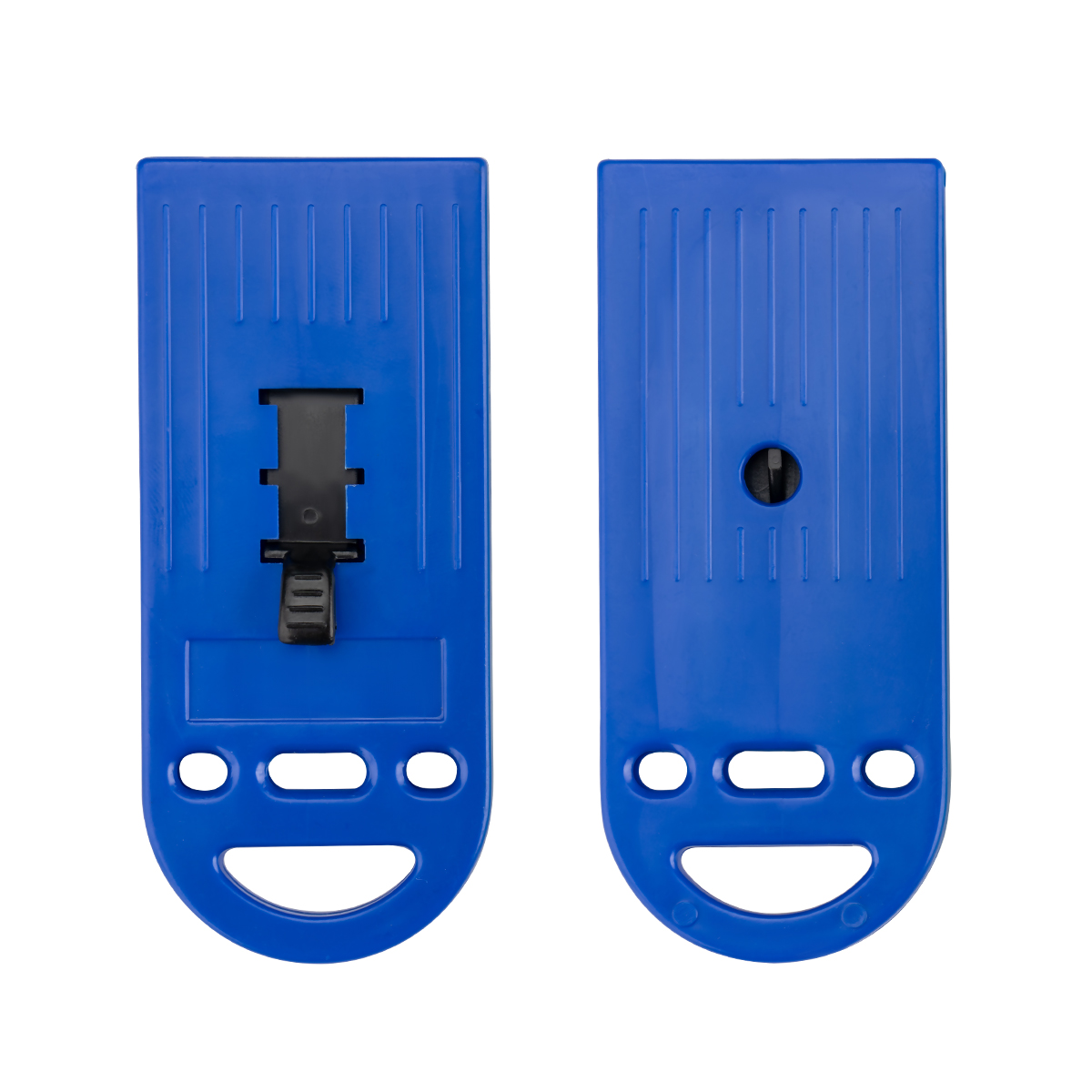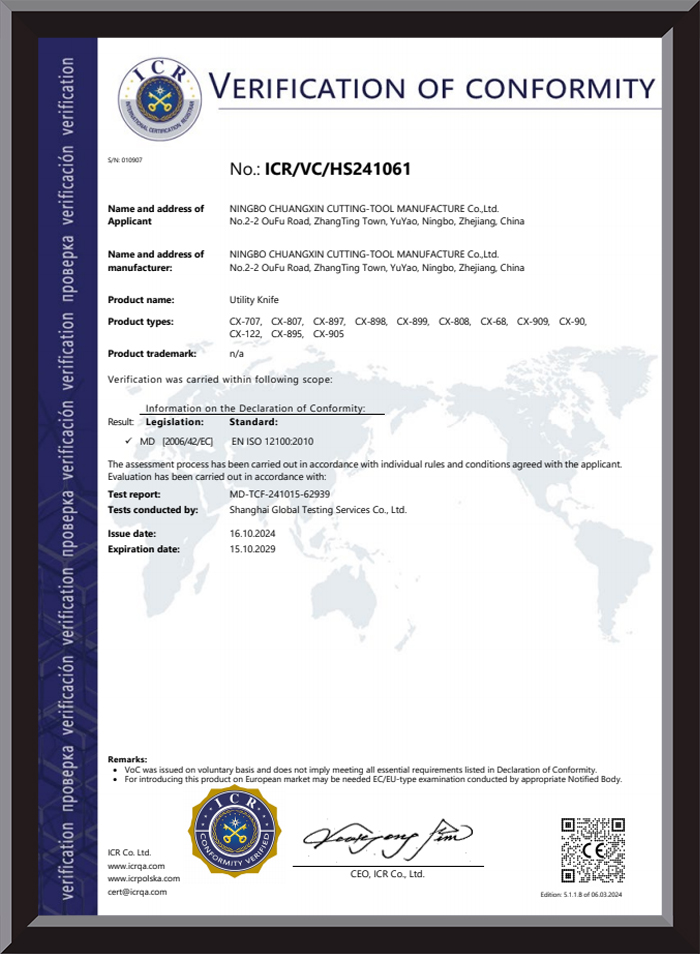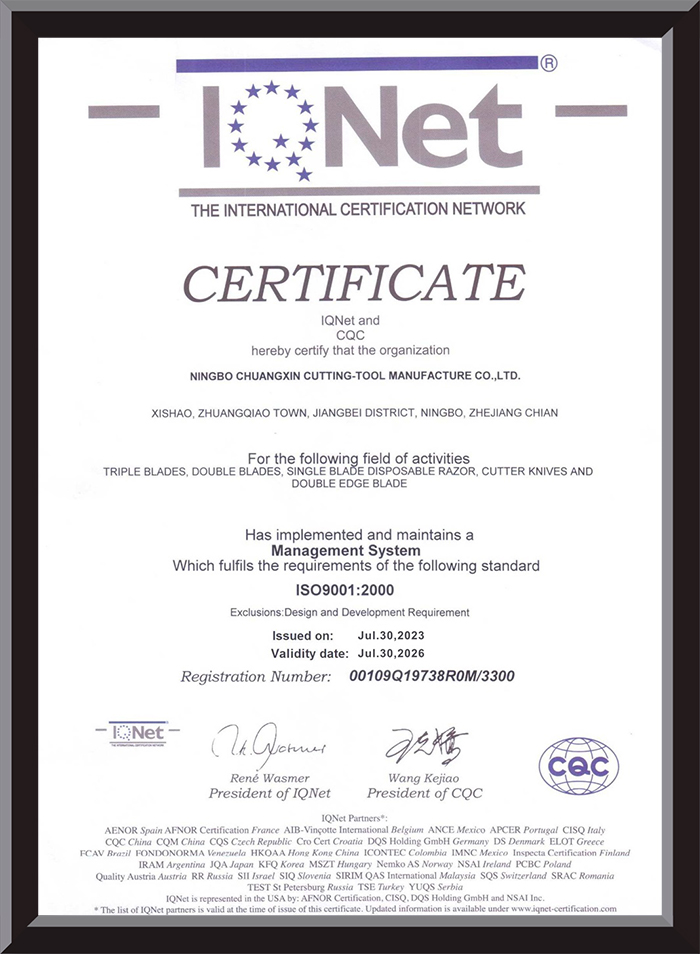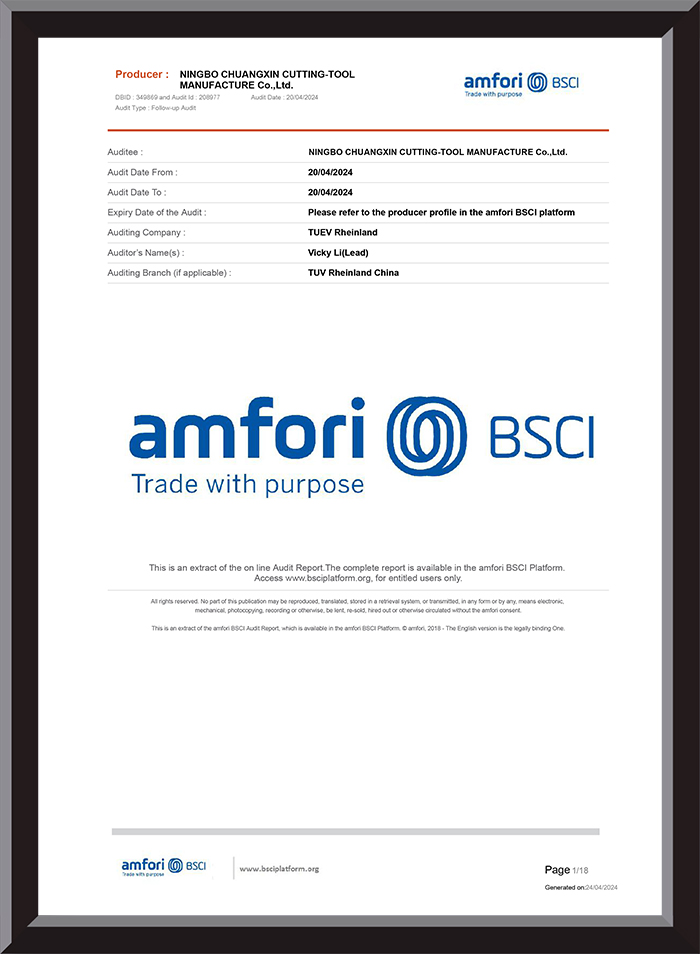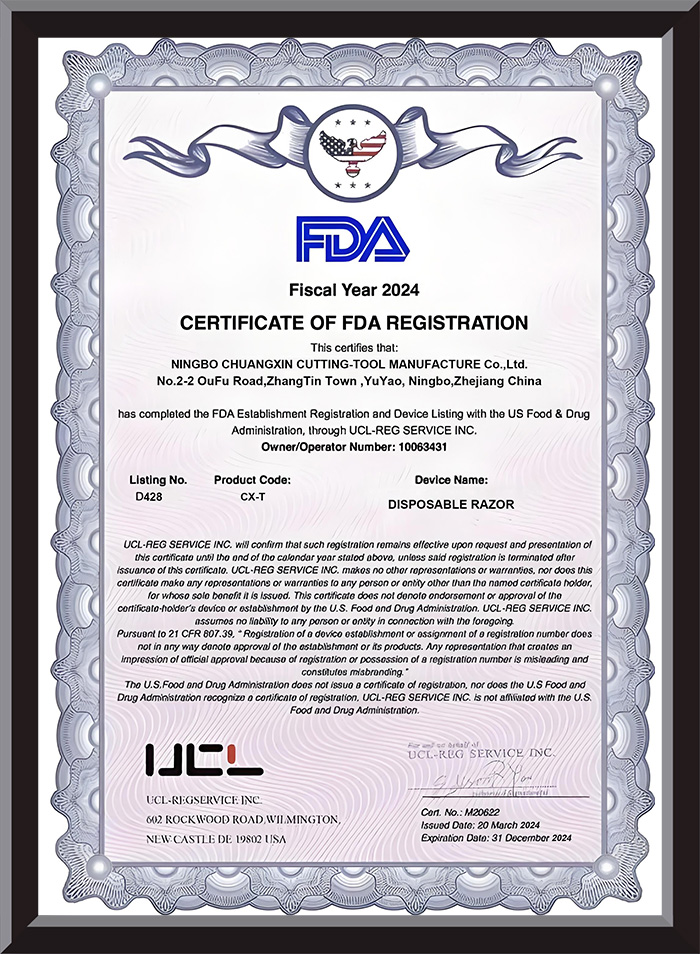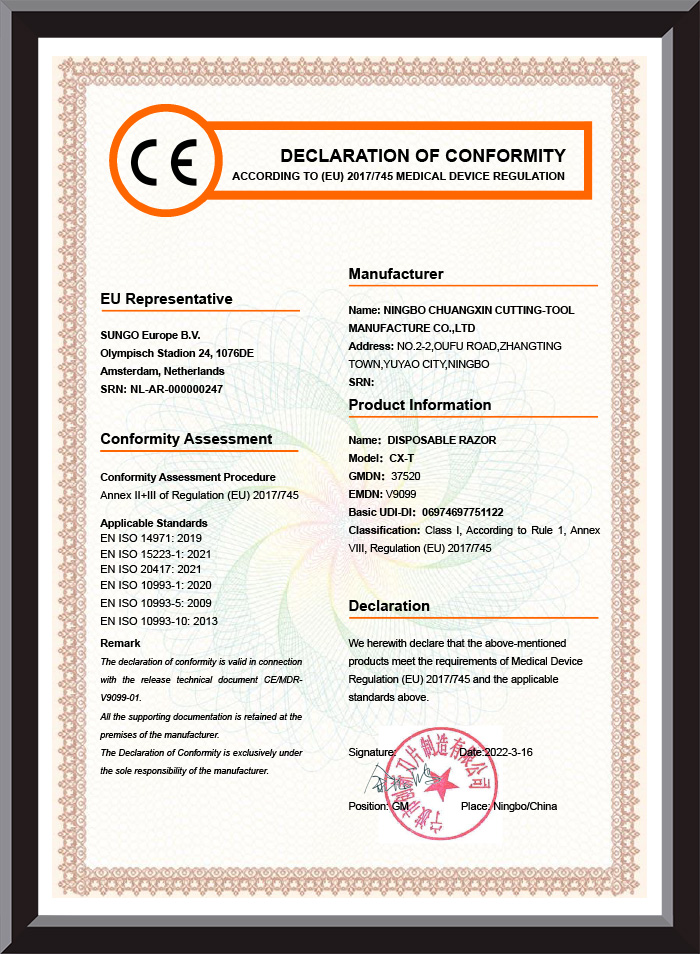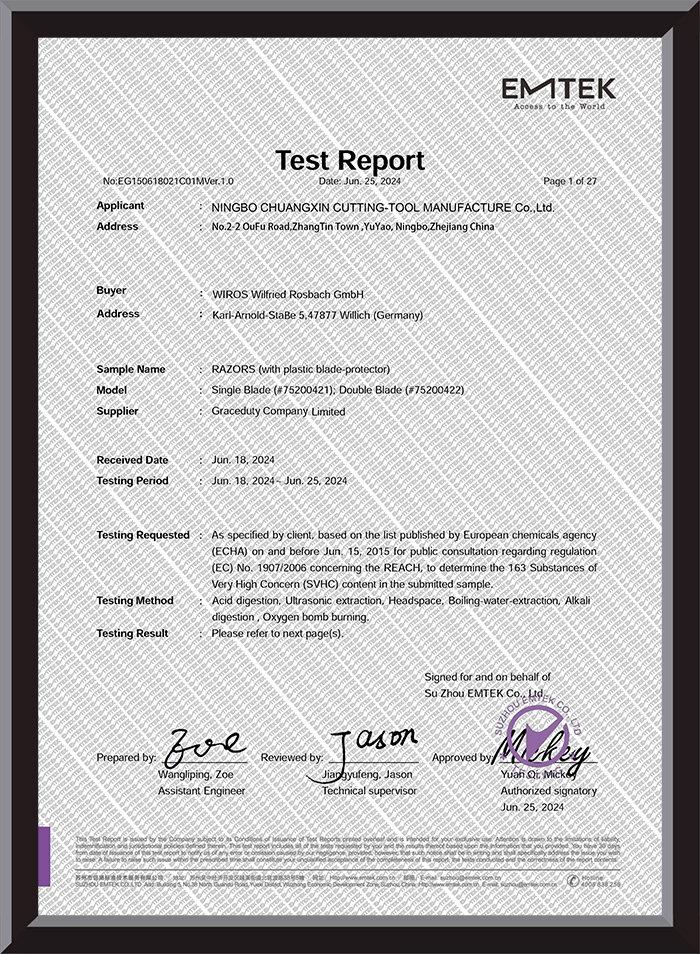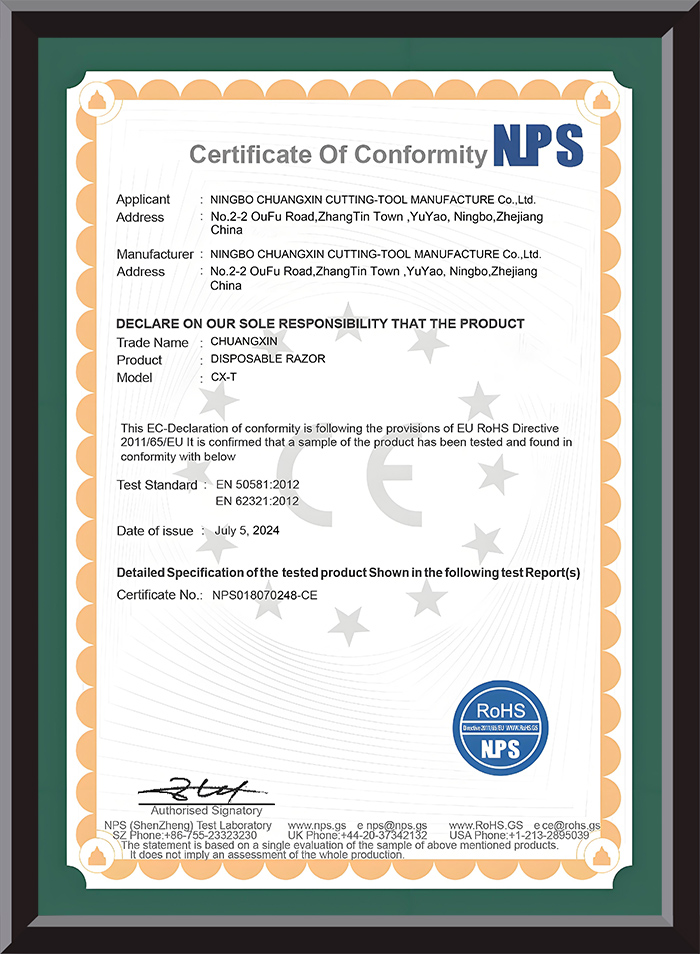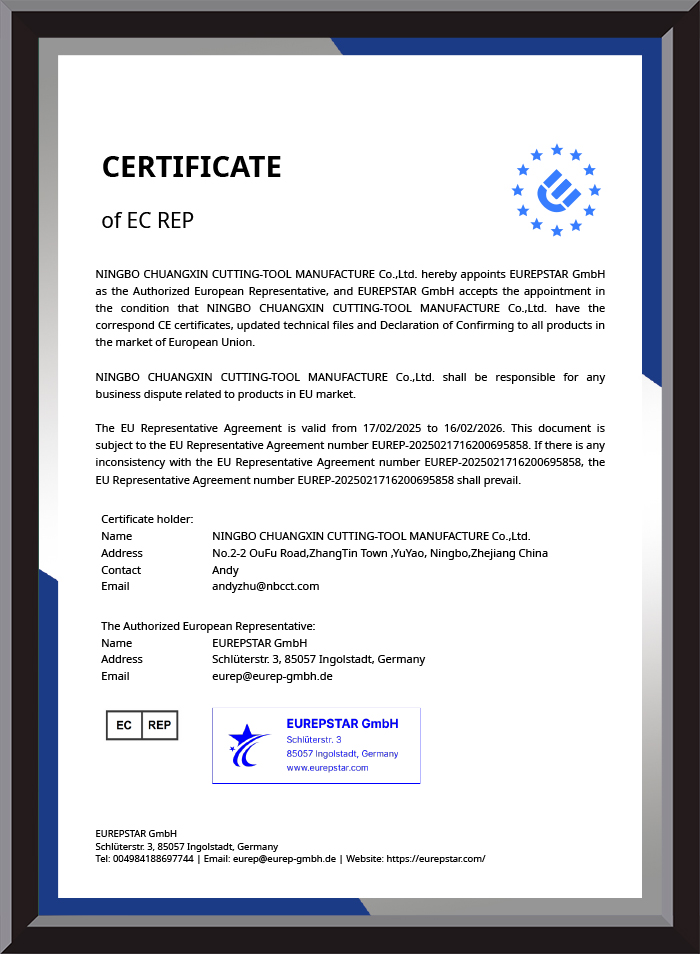La spatola CX-921 con una lama larga e affilata integra funzioni di raschiatura, scalpello, taglio e indispensatura, rimuovendo in modo efficiente ...
Feedback dei messaggi
Conoscenza del settore
UN Spacciamento della lama di utilità , noto anche come un coltello da raschietto, è uno strumento essenziale per una varietà di compiti, dai progetti di miglioramento domestico ai lavori professionali. Sia che tu stia rimuovendo la vecchia vernice, raschiando l'adesivo testardo o le superfici di vetro di pulizia, il raschietto giusto può rendere il lavoro più semplice ed efficiente. Questa guida ti aiuterà a comprendere i diversi tipi di raschiatori di lama di utilità, come scegliere quello migliore per le tue esigenze e come usarlo e mantenerlo per prestazioni durature.
Che cos'è un raschietto per lama di utilità?
- UN Spacciamento della lama di utilità è uno strumento portatile che utilizza una lama di rasoio sostituibile per rimuovere materiali come vernice, adesivo, decalcomanie e malta da varie superfici. È distinto da un coltello standard perché la sua funzione primaria è raschiare, con la lama in genere mantenuta a basso angolo rispetto alla superficie.
- Il corpo di un raschietto per lama di utilità è in genere realizzato con materiali durevoli come metallo (ad es. UNlluminio o acciaio inossidabile) o plastica ad alto impatto. La maniglia è spesso progettata per una presa ergonomica per fornire comfort e controllo durante l'uso. Il componente chiave è il supporto per lama, che blocca saldamente la lama sostituibile in posizione.
Tipi di raschiatori di lama di utilità
- Raschiatori di lama fissa: Questi raschiatori presentano una lama che è rigidamente fissata in posizione e non può essere ritirata nella maniglia. Offrono la massima stabilità e forza, rendendoli ideali per compiti pesanti in cui è necessaria una pressione costante, come la rimozione di materiali resistenti e incrostati come vecchia vernice o adesivo per pavimenti.
- Raschiatori di lama retrattile: Questi raschiatori hanno un meccanismo che consente di estendere la lama per l'uso e quindi di retrarsi nella maniglia per una conservazione sicura. Questo è popolare per le sue caratteristiche di sicurezza, poiché la lama può essere nascosta quando non è in uso, riducendo il rischio di tagli accidentali. I raschiatori a scomparsa sono altamente versatili, adatti a una vasta gamma di attività, dal raschiare le finestre alla rimozione di adesivi.
- Raschiatori pieghevoli: Simile a un coltello pieghevole, la lama su un raschietto pieghevole può essere piegata nella maniglia. Il vantaggio principale di questi è il loro design compatto e portatile, che li rende facili da trasportare in una tasca o in una cintura degli strumenti, rendendoli un'opzione conveniente per lavori veloci e in movimento.
| Caratteristica | Raschietto a lama fissa | Raschietto lama retrattile | Raschietto pieghevole |
|---|---|---|---|
| Stabilità | Massimo | Bene | Bene |
| Sicurezza | Richiede una guaina o un cappuccio | Alto (lama può essere ritirata) | Alto (lama è ripiegata) |
| Portabilità | Basso | Alto | Molto alto |
| Meglio per | Compiti pesanti e ad alta forza | Lavoro generale e precisione | Attività rapide, portatili, in movimento |
| Cambio di lama | Dipendente dall'utensile | Varia in base al modello (spesso senza strumenti) | Varia in base al modello (spesso senza strumenti) |
Caratteristiche chiave da cercare
- Materiale della lama:
- Acciaio al carbonio: Conosciuto per la sua durezza e capacità superiori di tenere un bordo affilato. È eccellente per i compiti che richiedono precisione e nitidezza di lunga durata, ma è più suscettibile alla ruggine e richiede maggiore manutenzione.
- Acciaio inossidabile: Altoly resistant to rust and corrosion, making it ideal for use in wet or humid conditions. While not as hard as carbon steel, many modern stainless steel alloys still offer very good performance and edge retention.
- Rivestimenti in lama: I rivestimenti come il titanio o l'ossido nero possono ridurre l'attrito, aumentare la durata della lama e fornire ulteriore resistenza alla ruggine.
- Gestire l'ergonomia: UN comfortable and secure grip is crucial for reducing hand fatigue and preventing injuries. Look for handles with soft, non-slip materials like rubber or cushioned plastic that are contoured to fit the hand.
- Meccanismo di sostituzione della lama: UN good scraper should have a safe and easy-to-use blade replacement system. Look for features like quick-release buttons or sliders that allow for tool-free blade changes.
- Durata e qualità costruttiva: La costruzione complessiva del raschietto è un indicatore chiave della sua longevità. Cerca una robusta build con una forte connessione tra il supporto della lama e la maniglia.
Come usare un raschietto della lama di utilità
- Precauzioni di sicurezza: UNlways wear safety glasses and gloves. Keep hands and fingers away from the blade and always work away from your body to prevent injuries.
- Preparare la superficie: Pulisci l'area dei detriti sciolti prima di iniziare a raschiare. Per i materiali ostinati, applicare una pistola termica o uno stripper chimico per ammorbidire la sostanza e rendere più facile rimuovere.
- Tecniche di raschiatura: Tenere il raschietto a un angolo basso e coerente (15-30 gradi) sulla superficie. Usa una pressione moderata e costante piuttosto che un'eccessiva forza e applicare colpi corti e controllati.
- Pulizia e conservazione: Pulire il raschietto di detriti e residui dopo ogni utilizzo. Assicurarsi che la lama sia completamente asciutta prima di conservarla per prevenire la ruggine. Conservare il raschietto in modo sicuro con la lama ritirata o coperta.
Suggerimenti di manutenzione
- Blade Care: Pulisci la lama pulita dopo l'uso. Mentre alcune lame possono essere affilate, è spesso più sicuro e più efficace sostituire semplicemente una lama opaca.
- Manutenzione della manutenzione: Pulisci periodicamente la maniglia per mantenere un'impugnatura sicura e non slittata. Ispezionare regolarmente la maniglia per eventuali danni.
- Prevenzione della ruggine: Il passo più critico è mantenere la lama completamente asciutta. Per la conservazione a lungo termine, applicare un sottile strato di olio che inibisce la ruggine. Conservare il raschietto in un ambiente secco e a bassa umidità.
UNdvanced Techniques
- Usando le pistole di calore: UN heat gun softens old paint, varnish, or adhesives, making them easier to scrape away. Hold the heat gun a few inches from the surface and keep it moving to prevent scorching.
- Stripper chimici: Questi liquidi o gel dissolvono i rivestimenti dalle superfici. Sono utili per aree intricate. Indossare sempre guanti e occhiali di sicurezza resistenti al sostanza chimica e lavorare in una zona ben ventilata.
- Raschiatori di lama multipla: Alcuni raschiatori sono progettati per contenere più lame o avere lame specializzate. Una lama più ampia è ideale per superfici grandi, mentre una lama più stretta è migliore per una pressione più focalizzata.
FAQ
- Quante volte dovrei sostituire la mia lama di raschietto per lama di utilità?
Sostituisci la lama non appena noti che diventa noioso o arrugginito. Una lama opaca richiede più sforzo e aumenta il rischio di scivolare. - Posso usare un raschietto per lama di utilità sul vetro senza graffiarlo?
Sì, fintanto che sia il vetro che la lama sono completamente puliti e privi di detriti. Usa una lama fresca e affilata e un angolo basso e coerente. - UNre all utility blades universal?
Mentre molti lo sono, alcuni modelli possono richiedere lame proprietarie. Controlla sempre le raccomandazioni del produttore. - È meglio usare un acciaio al carbonio o una lama in acciaio inossidabile?
Le lame di acciaio al carbonio sono più difficili e mantengono un bordo affilato più lungo ma sono più inclini alla ruggine. Le lame in acciaio inossidabile sono più resistenti alla ruggine, rendendole ideali per ambienti bagnati. - Qual è la differenza tra un raschietto della lama di utilità e un coltello da stucco?
UN Spacciamento della lama di utilità Utilizza una lama di rasoio affilata, sottile e sostituibile per la rimozione dei materiali. UN coltello da stucco ha una lama più spessa e più flessibile e viene utilizzata per applicare filler o per raschiatura leggera.

